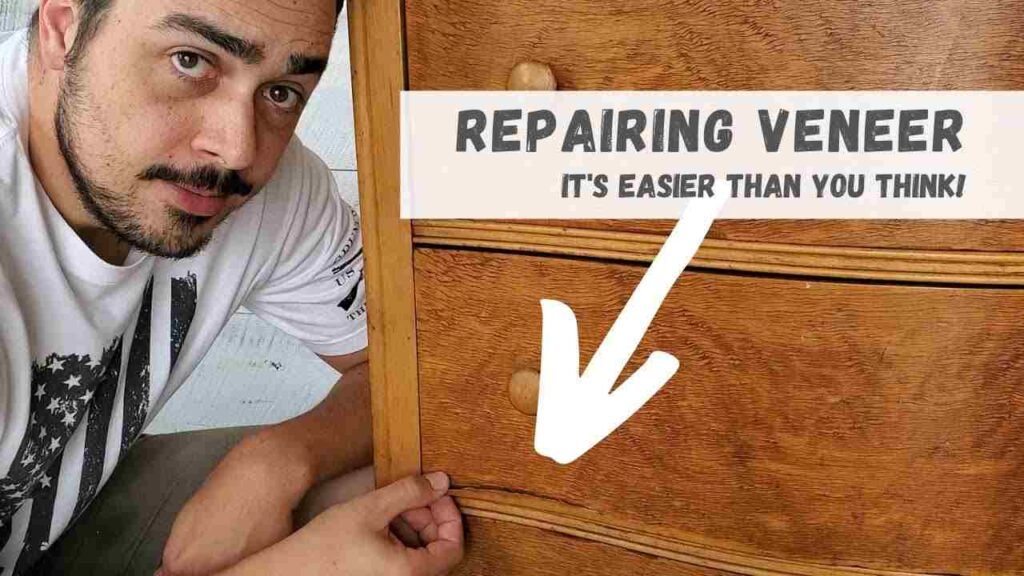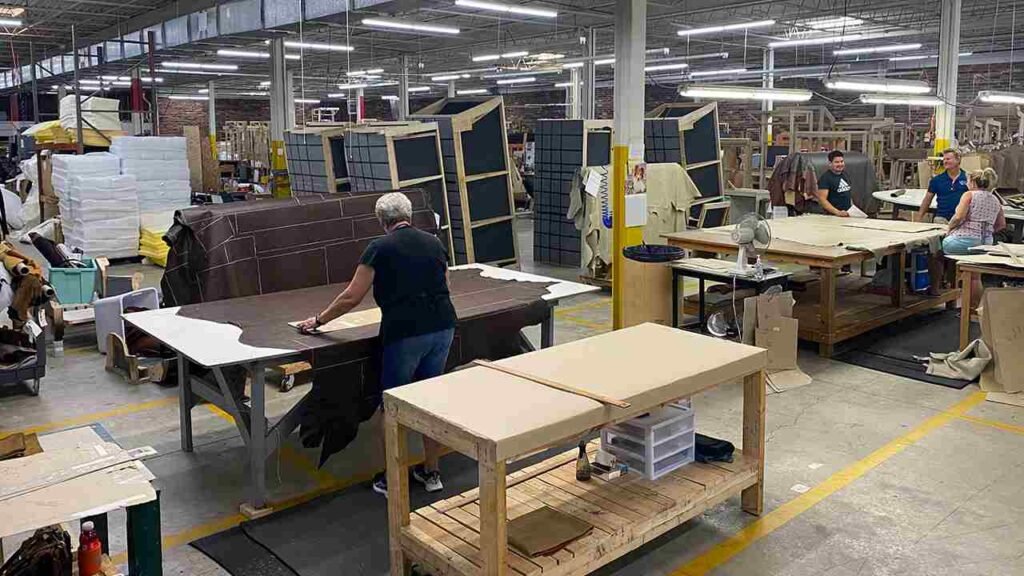Dealing with missing or damaged parts during furniture assembly can be a frustrating experience, but it’s a common issue that can be easily managed with the right approach. Whether you’re setting up new furniture in Houston or tackling a DIY project, the first step is to carefully inspect all components before you start assembling. If you find any missing or damaged parts, don’t panic—most furniture retailers and manufacturers offer solutions. Reach out to their customer service departments for replacements or repairs. In the meantime, make sure to keep all your purchase receipts and order numbers handy. In this guide, we will explore and guide you through effective steps to handle these issues efficiently, ensuring a smooth and successful assembly process alongside with FatCat Mover.

Addressing these issues promptly will help ensure that your furniture is assembled correctly and looks great in your home. By taking swift action, you minimize delays and avoid potential frustration during the assembly process. Furniture assembly services can further assist by handling missing or damaged parts professionally, providing replacements or repairs as needed. Ensuring all parts are in good condition also contributes to the overall durability and functionality of the furniture, providing you with a better long-term investment.
Common Issues with Missing or Damaged Furniture Parts
Missing or damaged furniture parts are common issues encountered during assembly. These problems can arise from manufacturing errors, shipping mishaps, or incorrect handling. Missing screws, bolts, or panels can halt the assembly process and cause delays. Damaged parts, such as scratched surfaces or broken components, not only affect the furniture’s appearance but also its functionality. Identifying these issues early is crucial to address them promptly and avoid further complications. Ensuring that assembled furniture is stable and safe involves carefully inspecting each part against the assembly instructions to catch problems before you begin assembling. This approach helps maintain both the safety and functionality of your furniture.
Steps to Inspect Furniture Parts Before Assembly
Inspecting furniture parts before assembly is an essential step to ensure everything is in order. Begin by unboxing and laying out all parts on a clean surface. Compare each part with the assembly instructions and parts list to confirm that everything is included. Check for any visible damage or defects, such as scratches, cracks, or bent pieces. Ensure that all screws, bolts, and other hardware are present and undamaged. The importance of proper furniture assembly for safety cannot be overstated, as a thorough inspection helps prevent instability and potential accidents. If you find any discrepancies, make a note and contact the retailer or manufacturer promptly. By thoroughly inspecting parts before assembly, you can prevent delays and complications, ensuring a smoother and safer furniture assembly process.
How to Contact Customer Service for Missing Parts
Contacting customer service for missing parts involves a few straightforward steps. Start by gathering all relevant information, including your purchase receipt, order number, and a list of the missing parts. Reach out to the retailer or manufacturer’s customer service department via their preferred contact method, such as phone, email, or an online form. Clearly describe the issue, providing details about the missing parts and any discrepancies noted. Many companies have dedicated support teams to handle such issues and can quickly arrange for replacements or provide solutions. Keeping your purchase documentation handy will help expedite the process and ensure you receive the necessary parts promptly.
Temporary Solutions for Damaged Parts
When dealing with damaged parts, temporary solutions can help you proceed with assembly while awaiting replacements. For minor scratches or dents, consider using furniture touch-up markers or repair kits to improve the appearance. If a part is broken but still functional, you might use temporary fixes like adhesive or tape to hold it in place until a replacement arrives. Ensure that any temporary fixes do not compromise the overall stability or safety of the furniture. If the damage affects a crucial structural component, it’s best to wait for a proper replacement to avoid long-term issues. These temporary measures can help you manage the situation until permanent solutions are available.
Keeping Track of Purchase Receipts and Order Numbers
Keeping track of purchase receipts and order numbers is vital for managing issues with furniture parts. Receipts serve as proof of purchase and are necessary for warranty claims or returns. Order numbers help customer service quickly locate your purchase details and verify your request for missing or damaged parts. Store these documents in a safe place, such as a dedicated folder or a digital file. Many retailers and manufacturers require these details to process replacement requests efficiently. Having organized and accessible records ensures a smoother resolution process and minimizes delays when dealing with missing or damaged parts.
Utilizing Warranty Services for Replacement Parts
Utilizing warranty services can be an effective way to obtain replacement parts for damaged or missing components. Most furniture comes with a warranty that covers defects or issues within a specified period. Review your warranty terms to understand what is covered and how to file a claim. Contact the retailer or manufacturer’s customer service to report the issue and provide your warranty details, purchase receipt, and any relevant information about the damaged parts. Warranty services can often expedite the replacement process, allowing you to receive new parts without additional cost. Understanding your warranty coverage and utilizing it properly can help resolve issues efficiently and maintain your furniture’s quality.
How to Report Problems with Furniture Manufacturers
Reporting problems with furniture manufacturers involves a clear and structured approach. Start by gathering all relevant information, such as your purchase receipt, order number, and detailed descriptions of the issue. Contact the manufacturer through their customer service channels, which may include phone, email, or an online portal. Provide a thorough explanation of the problem, including any missing or damaged parts, and attach supporting documents if required. Follow up as needed to ensure your issue is being addressed. Manufacturers typically have procedures in place to handle such complaints and can offer solutions like replacements or repairs.

Tips for Efficiently Managing Assembly Delays
Managing assembly delays efficiently requires organization and proactive steps. First, identify the cause of the delay, whether it’s missing parts, damaged components, or other issues. Communicate promptly with customer service to expedite the resolution process. In the meantime, organize your workspace and review assembly instructions to prepare for when the missing parts arrive. If possible, work on other tasks or projects while waiting to avoid idle time. Keeping all relevant documents and correspondence organized will help you address the issue quickly. Effective management of delays minimizes disruption and helps you complete the assembly process as smoothly as possible once all parts are available.
Ensuring All Parts Are Included in Your Furniture Kit
Ensuring that all parts are included in your furniture kit is crucial for a successful assembly. Before starting, carefully unpack and lay out all components on a flat surface. Compare each item with the parts list provided in the assembly instructions to confirm completeness. Check that all hardware, such as screws and bolts, is accounted for and in good condition. If any parts are missing or damaged, contact the retailer or manufacturer immediately to request replacements. Verifying that all necessary parts are present before assembly helps prevent delays and ensures that you can complete the furniture setup without interruption.
What to Do if You Can’t Reach Customer Service
If you can’t reach customer service, there are several steps you can take to address the issue. First, ensure that you are using the correct contact information, such as phone numbers or email addresses provided by the retailer or manufacturer. Try reaching out through multiple channels, such as social media or online support forms. If you’re still unable to make contact, visit the retailer’s physical location or a local store for assistance. Document all attempts to contact customer service, as this information can be useful if you need to escalate the issue. Persistence and exploring alternative contact methods can help resolve your problem even if initial efforts are unsuccessful.
Preventive Measures to Avoid Missing Parts in the Future
Preventive measures can help you avoid missing parts in future furniture assemblies. Start by thoroughly reviewing the parts list and assembly instructions before beginning the process to ensure you have everything needed. Check the packaging carefully for any hidden or small parts that might be overlooked. When purchasing furniture, buy from reputable retailers or manufacturers known for quality and comprehensive packing. Consider using a checklist to verify each component as you unpack. Additionally, inspect the packaging for any signs of damage that might indicate missing parts. Taking these precautions can help minimize the chances of encountering missing parts and ensure a smoother assembly experience.
Conclusion
In conclusion, handling missing or damaged parts during furniture assembly effectively ensures a smoother and more efficient process. By inspecting components before starting, promptly contacting customer service, and utilizing warranty services, you can address issues quickly and minimize disruptions. Keeping detailed records and employing temporary solutions can help manage delays while waiting for replacements. Additionally, taking preventive measures and exploring alternative contact methods when necessary can further streamline the assembly experience. Properly managing these challenges not only saves time but also enhances the overall quality and functionality of your furniture. With these strategies in place, you can enjoy a hassle-free assembly process and a beautifully completed piece of furniture in your home.
FAQs
What should I do if I discover missing parts after starting the assembly?
If you find missing parts after starting, stop assembly and review the parts list. Contact customer service immediately for replacements.
2. How can I expedite the replacement of damaged parts?
To expedite replacements, have your purchase receipt and order number ready when contacting customer service. Clearly describe the damage to speed up processing.
3. What steps should I take if I can’t reach customer service?
Try multiple contact methods, such as phone, email, or social media. If these fail, visit a physical store or document all contact attempts for future reference.
4. How can I prevent missing parts in future furniture purchases?
To prevent missing parts, inspect the packaging carefully and use a checklist to verify all components. Buy from reputable retailers known for thorough packing.
5. What temporary fixes can I use for damaged furniture parts?
For minor damage, use touch-up markers or repair kits. For broken parts, temporary fixes like adhesive can hold pieces until replacements arrive, but avoid compromising stability.
